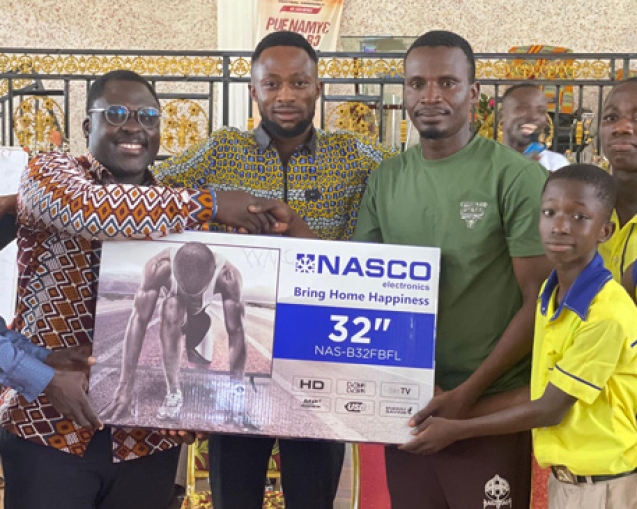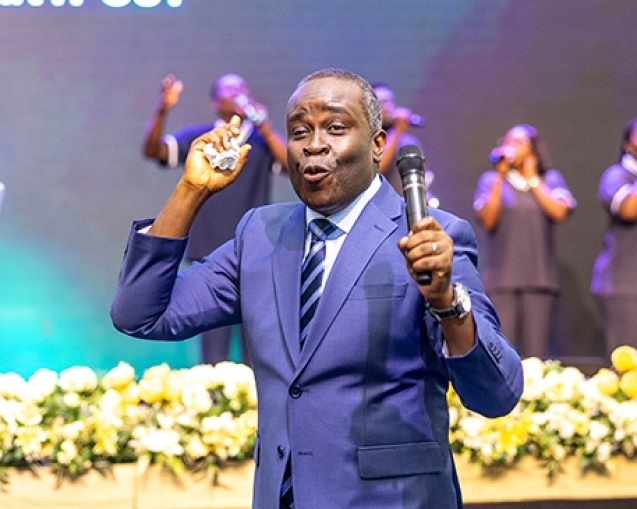Then Thomas (called Didymus) said to the rest of the disciples, “Let us also go, that we may die with him.” (John 11:16, New International Version)
Thomas Didymus, was one of the twelve disciples of Jesus Christ. Although all of the Gospels mention Thomas (Matthew 10:3, Mark 3:18, Luke 6:15), it’s only the Gospel of John that records any of Thomas’ words. Three places in the Gospel of John was he referred to as Thomas Didymus (John 11:16, 20:24, 21:2). His two names are actually one and the same. Thomas comes from the Hebrew (or Aramaic) and means “the twin”. Didymus is from the Greek and means “the twin.” He is thus widely believed to be born a twin. Although he is popularly known as “the doubting Thomas”, nowhere in scripture was he referred to as such; He was tagged as such in one moment of weakness. He was unfortunate to suffer the curse of the “bad news syndrome”, whereby bad news sells more than the good ones. Although He was involved in other exceptional moments that revealed some mysteries about our Lord Jesus Christ and his relationship with God the father, these ones are easily forgotten. Labels are difficult to change once they are engraved on a person, especially when it is negative. In her article, “The dangers of labelling people”, Gurimran Virk states that labelling is very dangerous. According to her, it has the possibility of creating stereotypes, hearsay, bias, fears, stigma and the inability to separate a person from the label itself. This is what happened to Thomas, one of the disciples of Jesus Christ.
The Apostle Thomas is seen as one who did not hold grudges nor did he nurse wound feelings. Time and again did he oppose letting Jesus expose himself to danger, but when the Master would decide to take such risks, always was it Thomas who rallied the apostles to go with him. In one such occurrence, the disciples wanted to stop Jesus from going to Judea (John 11:6-7), an expedition which they thought might end his life due to previous experiences they had there. His decision to go back to Judea did not make sense to them since the Jews wanted to stone him two days ago (John 8:59; 10:31; 10:39). Even when Jesus explained the situation to them, they were determined not to go back there, citing logical flaws in the arguments of Jesus. According to their logic, and rightly so, if Lazarus was asleep, he will surely wake up, by himself. And if he is dead, there is no reason to go there again for there is nothing that can be done for him again (John 11:11-15). The disciples were not only protecting the life of Jesus, but theirs as well. They feared that whatever might happen to Jesus will have a ripple effect on them as well. This action was borne out of lack of faith in Jesus and in his mission. Thomas Didymus, however, refused to let his fears take over him. He had surrendered his life totally to the Rabbi. He wanted to be with Jesus, in life and in death, and as though he was their leader, he rallied them, saying, “Come on, comrades, let’s go and die with him.” This is a declaration of faith, just like Paul declared in Philippians 1:21, “For to me, to live is Christ and to die is gain”. This is a declaration which should guide our walk as Christians. We should live for Christ, following him all the way, even through perils, believing that whatever the outcome, our lives will be preserved. As Jeremiah said in Jeremiah 10:23, our lives aren’t ours. Anyone who is in Christ has been crucified with Christ and thus their lives are not theirs anymore, but Christ’s (Galatians 2:20).
Thomas is the great example of a human being who has doubts, faces them and wins. He had a great mind; he was no carping critic. He was a logical thinker. It can be said that the reason why the others didn’t doubt was because they had seen the resurrected Christ. According to Luke 24:8ff, when the women came back from the empty tomb and after seeing the risen Christ, the disciples also doubted. Luke reported in verse 11, “But they did not believe the women, because their words seemed to them like nonsense”. They did not believe that Jesus Christ has resurrected from the tomb just as he told them. On the same day, while Cleopas and another were on their way to Emmaus, their conversation showed that they never believed Jesus had resurrected. Jesus was quoted as referring to them as fools, because of their unbelief (Luke 24:25, KJV). They only believed when Jesus performed a sign for them to see (Luke 24:30-31, 35). In the same manner, whiles the disciples were ‘hiding’ in a room and Jesus appeared to them, they had their doubts whether he was the one, they thought it was a ghost. Jesus himself challenged them by asking them to touch him and confirm for themselves so all doubts will be removed (Luke 24:37-40). They still did not believe until he performed a sign for them (Luke 24:41-43). In effect, Apostle Thomas was thus behaving as the other disciples will, just as anyone of us would have done. The doubt of Thomas was not borne out of unbelief or resistance to accept the truth of who Jesus is or what he has done. Thomas’ only crime is to desire an honest answer; after all, his quest led him to faith when he boldly declared, “My Lord and my God” (John 20:28). What we learn from Thomas is that being in Jesus’ presence brought out the best in him by increasing his faith. Conversely, being away from Jesus seemed to trigger doubt. Thomas made the first public profession of Jesus as being both Lord and God. It takes great faith to declare Jesus as Lord, for many Christians are yet to discover and settle on “Who” the lord of their lives is and therefore continue to live questionable Christian lives. As Apostle Dr. Emmanuel Anim puts it, the Christian cannot seek to enjoy the benefits of salvation in Christ without having to accept the “inconvenient” challenge of His lordship over their lives.
In chapter 14 of the Gospel according to John, Thomas again showed the characteristics of a candid person. Jesus openly declared to his disciples that he was going away to prepare a place for them so they can be with him wherever he is. He continued that they (the disciples) knew where the way to where he (Jesus) was going. This was news to them. The disciples had no idea what Jesus was going on about, but none had the courage to step in and ask him any questions, bar Thomas. He opened up to Jesus in all honesty, not faking knowledge but with a heart ready to learn from the master. He confessed to Jesus Christ, “Lord, we don’t know where you are going, so how can we know the way?”(John 14:5, NIV). This genuineness brought out one of the most remarkable statements of Jesus, “I am the way and the truth and the life. No one comes to the Father except through me” (John 14:6, NIV). We should thus not be afraid of asking questions. Questions, no matter how stupid they may sound can lead to new insights, revelations and breakthroughs.
Nicky Gumbel disagrees with people who regard faith as unquestioning and think that faith and doubt are opposites. According to him, faith and doubt are two sides of the same coin. Although there is no doubt that 2 + 2 = 4, it does not take any faith to believe it. On the other hand, to believe that someone loves you is open to an element of doubt. To put your faith in God is similar to loving a person. There is always the possibility of doubt. Without doubt, faith would not be faith. The Apostle therefore used that moment of questioning to build upon his faith.
Many have made the unfortunate error of defining the Apostle by his one moment of doubt. If we “refuse” to use Thomas’ moment of bravery to define him, then we should not be quick to define him with his moment of doubt, or lack of faith as we term it. We all have moments we are proud of and other moments we wish we could forget. The rest of the disciples doubted as much as he did. As Jack Wellman beautifully put it, there is no doubt that Thomas was a strong believer and a powerful missionary used by God to His Glory.
Written by P/Overseer Eric Akude (Kpetoe District)


















